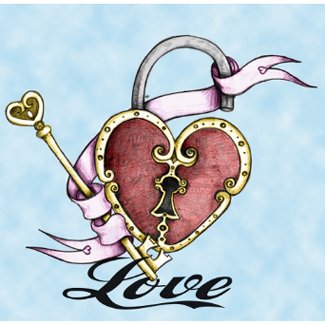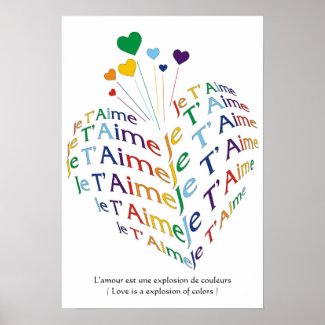Wednesday, January 25, 2012
How does the Theory of Attachment Affect Our Romantic Relationships?
Have you ever wondered about why some people are clingy in relationships? Have you ever wondered why some of your lovers were so distant and seemed unemotional? Why are other people neither too clingy nor too emotionally closed off? Mary Ainsworth's theory of attachment holds the answers to these questions.
Secure Attachment
People are supposed to develop a secure attachment in relationships, because it will make them less aggressive, more empathetic, less disruptive, and more mature. In addition, adults who are securely attached have good self esteem, enjoy intimate and close relationships, can share their feelings and thoughts with others, and seek out social support. Overall, adults with a secure attachment style have long-term, trusting relationships.
Secure Attachment is Linked to Eros Love
Secure Attachment in Children
Ambivalent Attachment
It is not healthy to have an ambivalent attachment style, because you tend to be anxious, worry that your partner does not love you, be reluctant to become close and intimate with others, and be extremely distressed when a relationship ends. Ambivalent attachment in adults may cause romantic relationships to feel cold and distant to them. They worry constantly over whether or not the other person's feelings are true. People who are ambivalently attached can also be clingy and overly dependent.
Ambivalent Attachment is Linked to Mania Love
Ambivalent Attachment in Children
Avoidant Attachment
Being avoidantly attached is also unhealthy, because you cannot have a deep romantic relationship due to the fact that you guard your heart and keep a certain level of emotional distance. People with an avoidant attachment style have difficulty with intimate relationships, use excuses to avoid intimacy and closeness, are not very supportive to their partners, and do not feel distraught when a relationship ends. In essence, those who have an avoidant attachment style do not share their emotions, thoughts, or feelings with their partners. Therefore, they cannot reap the benefits of a close and intimate romantic relationship.
Avoidant Attachment is Linked to Ludus Love
Avoidant Attachment in Children
Click Here to find out your Attachment Style
Another Attachment Style Quiz
Disorganized Attachment
After Mary Ainsworth's contributions to the theory of attachment, Mary Main discovered a fourth type of attachment style, dubbed disorganized attachment. People with a disorganized attachment style think that people cannot be trusted, act controlling, have poor social skills, act aggressive, have anxiety, feel sad, have poor self control, and become frustrated easily.
What if I am not securely attached? What if my child doesn't appear to be securely attached?
Fortunately, attachment styles are not permanent. A person who is ambivalently attached can become securely attached. Even a securely attached individual can become avoidantly attached! The initial attachment is determined by the emotional bond (or lack of) made with the primary caregiver as a child. However, as a child becomes older, he begins to attach to other people and through the positive or negative experiences with those people, he is susceptible to change.
Sunday, January 22, 2012
John Bowlby's Attachment Theory
John Bowlby's attachment theory is based off of the fact that people are born biologically programmed to attach with others, in order to survive. Babies are incapable of raising themselves. Without a caregiver, they would die. Therefore, is it surprising that we are hard-wired with the need for attachment? Failure to make an attachment with a primary caregiver can cause negative consequences in the future.
Did you know that before a woman gives birth, her brain begins releasing more oxytocin? This hormone is critical for the bonding process in both humans and other animals.
Level Of Oxytocin In Pregnant Women Predicts Mother-Child Bond
Oxytocin: It’s a Mom and Pop Thing
Mother's phone call as comforting as a hug, says oxytocin study
Oxytocin Promotes Social Attachment, Beginning with Mother and Child
John Bowlby's Attachment Theory Defines Social Releasers
Crying
Crawling
Smiling
John Bowlby's attachment theory states that attachment behaviors are triggered by separation, fear, and insecurity. In addition, the fear of strangers is a natural survival mechanism. Therefore, people are born with these instinctive behaviors, in order to trigger contact and closeness with the mother.
"The propensity to make strong emotional bonds to particular individuals is a basic component of human nature." - John Bowlby
4 Main Discoveries of John Bowlby's Attachment Theory
A baby has a predisposed biological need to attach to a primary caregiver, typically the mother. It is possible for a child to have more than one attachment figure, but early on the baby yearns to make a primary attachment. John Bowlby also believed that the emotional bond between mother and child is very different from other types of relationships. This does not mean that the father is incapable of bonding with a child. In fact, research has showed that the father is just as important as the mother. Fathers bond differently with their children.
The baby should be cared for by the primary caregiver for the first 2 years. John Bowlby believes that if the emotional bond between the infant and primary caregiver is broken or not consistent during the first few years of life, then the child can develop emotional, social, and cognitive problems.
If the baby fails to attach, there may be negative consequences. These include affectionless psychopathy, increased aggression, delinquency, depression, and decreased intelligence.
Attachment creates an internal working model. The internal working model is how the child understands others, the world, and the self. Simply put, how well the baby attaches with his primary caregiver has an influence on how he interacts with others and what he expects from others.
The Theory of Attachment Began with John Bowlby
John Bowlby's attachment theory serves as the foundation of the theory of attachment. Many psychologists have researched attachment and added onto John Bowlby's basics of attachment.
Labels:
attachment,
bond,
john bowlby,
john bowlby's attachment theory,
oxytocin,
theory of attachment
Saturday, January 14, 2012
Colors of Love
In 1973 John Lee wrote the Colors of Love, a book that explained different styles of love. John Lee associated these styles with colors by dividing the types of love into primary colors of love and secondary colors of love. The primary styles of love are eros, ludus, and storge.
Eros Love
Eros is includes passion, beauty, intimacy, physical attraction, and intensity. Erotic lovers love so intensely that they risk living in a fantasy world. To other people, they appear to be so unrealistic and idealistic. But the erotic lover may be unaware of the problem. An erotic lover tends to have higher expectations and has the ability to be blind to a person's imperfections, that is until the passion and excitement finally fades.
After the high feeling wears off, the person is now fully aware of the other person's imperfections. Because of this, the erotic lover may feel disappointed, depressed, empty, and unsatisfied.
There is nothing wrong with being an erotic lover, but you should make sure to keep yourself in check.
Advice for the Erotic Lover
Ludus Love
Ludic lovers view love as a game and are known as players. Ludic lovers are careful to not allow any emotional intensity in their lives. They are abhorred by the thought of being tied down, easily cheat, and recover from break ups easily. In essence, a ludic lover keeps his heart guarded, so that he cannot be hurt. The major problem with doing this is you are unlikely to find real love, because true love requires being honest and open with your partner. Not a single person is not vulnerable when it comes to truly loving someone.
Advice for the Ludic Lover
Storge Love
Storge love evolves from a friendship slowly, so slowly that you cannot tell exactly when the romantic relationship began. Storgic lovers place an importance on commitment, trust, and respect. In addition, storgic lovers tend to think of their partners as their best friends.
While storgic love is a strong and long lasting love, passion can sometimes be lacking.
Advice for the Storgic Lover
Pragma Love
In contrast to erotic lovers, pragmatic lovers use their head to choose their partners instead of their hearts. This means that they have a list of things that they are looking for in a partner. Pragmatic lovers are realistic, logical, and rational.
The disadvantage of being a pragmatic lover is that passion and intimacy can be missing.
Advice for the Pragmatic Lover
Mania Love
Manic love is an obsessive type of love, therefore unhealthy in most cases. In general, manic lovers have low self esteem and think that their partner's love will alleviate these self esteem issues. Because manic lovers become so dependent and attached to their partners, they can suffer from depression and anxiety when the relationship ends.
Advice for the Manic Lover
Agape Love
Agape love, the rarest form of loving, is a very selfless and patient love. Agapic lovers would do anything for their lovers, perceive sex as a very special act, and don't expect anything in return. Religiously, agapic love tends to be praised. However, when it comes to a romantic relationship agapic love can be unhealthy. This is because the agapic lover may not have his needs met and may be used and walked all over.
Advice for the Agapic Lover
Eros Love
Eros is includes passion, beauty, intimacy, physical attraction, and intensity. Erotic lovers love so intensely that they risk living in a fantasy world. To other people, they appear to be so unrealistic and idealistic. But the erotic lover may be unaware of the problem. An erotic lover tends to have higher expectations and has the ability to be blind to a person's imperfections, that is until the passion and excitement finally fades.
After the high feeling wears off, the person is now fully aware of the other person's imperfections. Because of this, the erotic lover may feel disappointed, depressed, empty, and unsatisfied.
There is nothing wrong with being an erotic lover, but you should make sure to keep yourself in check.
Advice for the Erotic Lover
Ludus Love
Ludic lovers view love as a game and are known as players. Ludic lovers are careful to not allow any emotional intensity in their lives. They are abhorred by the thought of being tied down, easily cheat, and recover from break ups easily. In essence, a ludic lover keeps his heart guarded, so that he cannot be hurt. The major problem with doing this is you are unlikely to find real love, because true love requires being honest and open with your partner. Not a single person is not vulnerable when it comes to truly loving someone.
Advice for the Ludic Lover
Storge Love
Storge love evolves from a friendship slowly, so slowly that you cannot tell exactly when the romantic relationship began. Storgic lovers place an importance on commitment, trust, and respect. In addition, storgic lovers tend to think of their partners as their best friends.
While storgic love is a strong and long lasting love, passion can sometimes be lacking.
Advice for the Storgic Lover
Pragma Love
In contrast to erotic lovers, pragmatic lovers use their head to choose their partners instead of their hearts. This means that they have a list of things that they are looking for in a partner. Pragmatic lovers are realistic, logical, and rational.
The disadvantage of being a pragmatic lover is that passion and intimacy can be missing.
Advice for the Pragmatic Lover
Mania Love
Manic love is an obsessive type of love, therefore unhealthy in most cases. In general, manic lovers have low self esteem and think that their partner's love will alleviate these self esteem issues. Because manic lovers become so dependent and attached to their partners, they can suffer from depression and anxiety when the relationship ends.
Advice for the Manic Lover
Agape Love
Agape love, the rarest form of loving, is a very selfless and patient love. Agapic lovers would do anything for their lovers, perceive sex as a very special act, and don't expect anything in return. Religiously, agapic love tends to be praised. However, when it comes to a romantic relationship agapic love can be unhealthy. This is because the agapic lover may not have his needs met and may be used and walked all over.
Advice for the Agapic Lover
Labels:
agape,
agapic lover,
colors of love,
eros,
erotic lover,
john lee,
love,
ludic lover,
ludus,
mania,
manic lover,
pragma,
pragmatic lover,
storge,
storgic lover,
styles of love,
theory of love
Friday, January 13, 2012
Triangular Love Theory
“What does it mean to love someone? Does it always mean the same thing, and if not, in what ways do loves differ from each other? Why do certain loves seem to last, whereas others disappear almost as quickly as they are formed?” – Robert Sternberg
These are questions that most people ask themselves at some point in their lives. Robert Sternberg formed the triangular love theory with these questions in mind. The triangular theory of love is based on the three components of love. Sternberg declared these components as intimacy, passion, and commitment.
Intimacy is feelings of connection and closeness. If you are intimate with your partner, then you are comfortable with opening up with each other.
Passion is feelings of sexual attraction, euphoria, and physical attraction.
Commitment is the decision to maintain the relationship via loyalty and dedication to love someone.
Check out Sternberg's Triangular Theory of Love Scale for a better understanding of what constitutes intimacy, passion, and commitment. This test will help you determine what type of love you have with your partner.
The triangular theory of love states that different combinations of intimacy, passion, and commitment create seven different types of love:
Liking (intimacy) – Applies to friendship
Infatuated Love (passion) – Usually referred to as love at first sight
Empty Love (commitment) – Includes arranged marriages and relationships that lost intimacy and passion
Romantic Love (passion + intimacy) – These relationships usually don't last long
Companionate Love (intimacy + commitment) – Can apply to family, good friends, and lovers
Fatuous Love (passion + commitment) – Common when passion is the reason for marrying
Consummate Love (intimacy + passion + commitment) – What we like to call true love
According to Sternberg's triangular love theory, no type of love is ever set in stone. Even if your love has morphed into empty love, there is always hope. Empty love can turn into any other type love and vice versa.
Therefore, if you currently are in a relationship that has consummate love, never forget to keep working to maintain that level of love. Otherwise, it may turn into companionate love, empty love, or worse. By knowing what type of love you currently have, you can even salvage a relationship that might have ended. A little bit of knowledge can truly be helpful.
Thursday, January 12, 2012
Introduction to Mysteries of the Mind
Mysteries of the mind is a blog dedicated to informing you about interesting psychological facts, theories, and news. Psychology may be a relatively new field, only about 137 years old, yet there is an enormous amount of information to know. There is even more left to learn about the brain. We have only begun to understand how the mind functions.
Learning about different theories provides food for thought that can provide valuable insight into your life. Ever hear the adage “knowledge is power?” Each day I strive to learn something new, whether it relates to psychology or not. I believe that you can never learn enough, even if it's something that doesn't seem important.
Therefore, I hope that you will follow my blog and learn more about psychology with me.
Subscribe to:
Posts (Atom)










